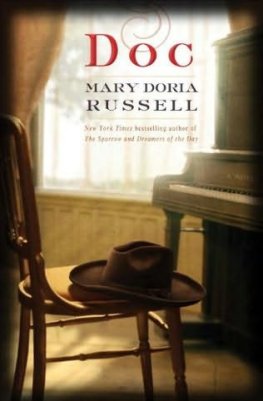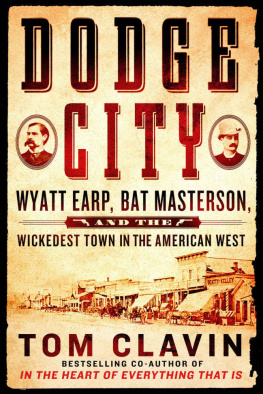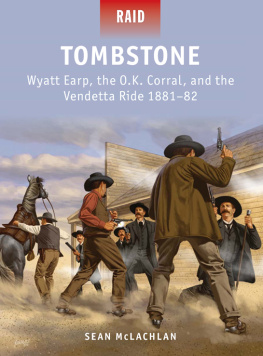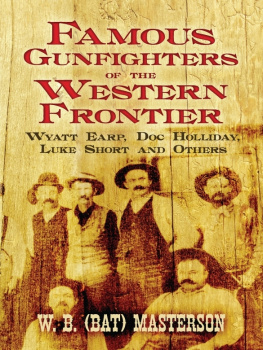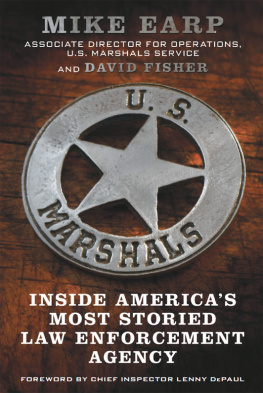

FOR JOEY, MY FIRST HERO
Whatever you choose, however many roads you travel, I hope that you choose not to be a lady. I hope you will find some way to break the rules and make a little trouble out there.
Nora Ephron, Wellesley College commencement address
I dont have to speak, she defends me.
Robbie Robertson, Up on Cripple Creek

| Contents
D ID YOU know that Wyatt Earp was buried in a Jewish cemetery?
Just hearing his name threw me back to my childhood in Jackson Heights, New York City, sprawled on the floor in front of a black-and-white television, watching Westerns with my big brother Joey, dressed up in his special shirt with braided trim and snazzy snap buttons and black cowboy hat and shiny gun in a faux leather holster slung around his hips. Joey and I tuned in and pretended to walk the streets of Tombstone every week, together with millions of Americans, young and old.
Joey was my hero, and Marshal Earp was his.
Brave, courageous, bold... and Jewish?
Thats how it all started, just an innocent question from a friend who thought (correctly) that I would be intrigued by the incongruities between anything Jewish and anything Tombstone-ish.
This first burst of curiosity about Wyatt Earps final resting place and religion was easily satisfied. I soon learned that Wyatt, the only man to emerge unscathed from the Gunfight at the O.K. Corral, was not Jewish but had lived with a Jewish woman for nearly fifty years. She buried him next to her parents and brother in a family plot at the synagogue-affiliated Hills of Eternity cemetery outside of San Francisco.
And that was my introduction to Mrs. Earp.
As children when Wyatt Earp ruled the airwaves, we didnt know that he had a wife, certainly not a Jewish wife from New York. I was a Jew from New York! So each revelation about a woman named Josephine Sarah Marcus evoked new images that made me smile, especially the thought of Wyatt Earp going home for chicken soup after a tough day fighting for truth and justice in the dusty streets of Tombstone, Arizona.
I quickly became far more interested in Mrs. Earp than in her famous husband. Contradictions piled up like a freeway collision. How had a beautiful girl from San Francisco via New York and Prussia ended up in Tombstone? While the rest of her immigrant family climbed out of poverty and into bourgeois respectability, why had Josephine run away? What inspired five decades of adventure-seeking that took her from the Arizona Territory to California, Nevada, and Alaska, and then, finally, to Hollywood?
The historical record on Josephine was thin. None of the early articles and books about Tombstoneand there were manyeven mentioned her existence. On the other hand, the history of Wyatt Earp and the Arizona Territory sank deep roots into the American psyche. Books about Wyatts exploits became best sellers, movies played to full houses, and historical reenactments drew large crowds. Wyatt Earp was big business, then and now. Try a random Internet search today, and the O.K. Corral will pop up in a motley assortment of links to political contests, basketball championships, and stock traders fixing interest rates. On Wikipedia, the story of Wyatt Earp is told in twenty-six languages, but Josephine was, until recently, nowhere to be found.
On October 26, 1881, Wyatt, his handsome brothers, and Doc Holliday strode down Tombstones main street and confronted a quartet of murderous cowboys and thieving cattle rustlers near the O.K. Corral. Less than a minute and dozens of bullets later, three men were dead and three were injured. Wyatt Earp walked away without a scratch.
The gunfight never loosened its iron grip on the publics imagination. For more than a century it has remained an important symbol of American culture, evoked in the wake of every contemporary tragedy, from Columbine to Gabrielle Giffords, an enduring reference point for our national obsession with guns and violence and revenge. Along the way, cow-boy lost the hyphen and mutated from lawless marauder to the Maverick Man. Tombstone and the O.K. Corral became intertwined with other powerful themes of American history: industrialization, urbanization, seismic shifts of attitude toward gambling and alcohol and prostitution, and the end of the American frontier.
I thought I knew the story. But I knew only one version. The O.K. Corral is a story with a thousand variations. There is, for instance, the Marxist script that casts the Earps as the repressive embodiment of a capitalist regime, determined to impose law and order on the frontier to keep profits flowing. In the Manichean narrative, Wyatt Earp is a defining figure in the dynamic interplay of good and evil.
As Josephine and I became better acquainted, I wanted to hear the human version that restored to its center the real life of one woman caught up in the frenzied atmosphere of the most famous frontier boomtown. The Gunfight at the O.K. Corral was a love story, fought over Josephine Marcus, a woman of beauty and spunk barely out of her teens, escaping the restrictions of birth and seeking adventure, independence, and romance.
SHE HAD BEEN born on the wrong side of the tracks. For the rest of her life, Josephine would characterize her father as a wealthy German merchant, but that was one of her cover-up tales. Her mother and father were from Prussia and subject to the deep-seated prejudices of German Jews against their Eastern European cousins. They had neither the connections nor the education nor the wealth to launch their daughter into the highly stratified German-Jewish aristocracy of nineteenth-century San Francisco.
Although she never experienced anything as dramatic as a spiritual crisis or loss of faith, Josephine was indifferent to being Jewish and believed that she could leave her family history behind. As Nora Ephron would memorably say of herself, Josephine was not in denial; she acknowledged that she was a Jew, but being Jewish was not in the top five things she wanted you to know about her. Her few nostalgic references to home were linked to her mother and some affectionate Yiddish blessings and songs. An accomplished cook, she preferred biscuits and other southern specialties to the schmaltz of her childhood. She relinquished all personal ties to Judaism or any organized religion, preferring a kind of loosely held pantheism that peeked out occasionally when she was overwhelmed by the grandeur of the Californian desert or the wild Yukon River. Wyatt Earp had more Jewish friends than she did. In the rough and paranoid years of her later life, she stooped to label her enemies kikes or sheenies.
And yet when she confronted her greatest crisis, she turned back to her familys faith and buried her husband among the Jews of San Francisco.
Josephine was street-smart and intuitive, playful and fearless and headstrong. A mixture of naive and sophisticated, she had no interest in politics, and no one remembered her picking up a book or a newspaper. She yearned to be a lady, while spending much of her life among gamblers and gunfighters. She was a mans woman, with a handful of female friends. None of her husbands status as popular culture hero would rub off on her: there would be no television shows or theme songs about her, no lunch boxes with her image.
Next page


